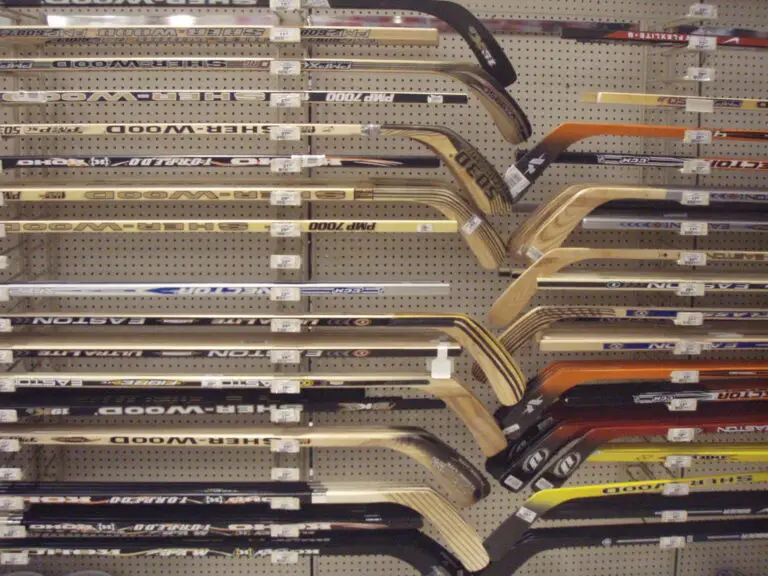Exploring Nanotechnology in Hockey Stick Construction
Nanotechnology is the science, engineering, and application of materials and devices by controlling the matter on the atomic and molecular scales. This technology, at the nanoscale, 1 to 100 nanometers, has had a major impact on various industries, thanks to the unique properties that matter shows at such small scales. A lesser-known field where nanotechnology has made significant inroads is the construction of sports equipment, particularly in the domain of ice hockey.
Introduction
For passionate hockey players and aficionados, the mere mention of nanotechnology in the context of their beloved sport might raise an eyebrow or two. However, the integration of nanotechnology into the construction of hockey sticks has changed the game, literally. By leveraging the unique material properties rendered possible by nanotechnology, hockey stick manufacturers have been able to push the boundaries of performance, durability, and injury mitigation.
Understanding Nanotechnology
At the core of this revolution lies an understanding of nanotechnology in materials science. Nanomaterials, which include carbon nanotubes, graphene, and nanocomposites, possess exceptional mechanical, electrical, and thermal properties. These attributes are a direct result of the high surface area to volume ratio they present at the nanoscale, enabling unprecedented strength, lightness, and resilience in the materials that house them.

What is Nanotechnology?
When we mention nanotechnology, we are referring to the manipulation and study of materials at the nanoscale. This involves the creation and use of materials, devices, and systems that have a functional organization in at least one dimension on the nanometer scale, ranging from a few to about 100 nm.
While the concept itself may seem futuristic, it is increasingly being harnessed to produce products that offer superior performance across various sectors, from medicine to electronics and, as we’re focusing on here, sports equipment.
Benefits in Hockey Stick Construction
The application of nanotechnology in hockey stick construction has unlocked several advantages that were inconceivable a few decades ago.
Enhanced Strength-to-Weight Ratio
By using nanomaterials, manufacturers are able to create hockey sticks that are incredibly strong, yet remarkably lightweight. This means players can execute faster shots with greater force and control without experiencing the fatigue associated with heavier sticks. The enhanced strength-to-weight ratio of nanocomposite sticks ensures that players can depend on the durability of their gear during the most intense game situations.
Improved Durability and Performance
Historically, hockey sticks often succumbed to the rigors of play, breaking or losing their original form, which is critical for accurate shooting and passing. Nanotechnology has paved the way for incredibly tough materials that maintain their integrity under pressure, leading to a longer-lasting and more consistent performance from the sticks.
Precision Engineering
Nanotechnology allows the manipulation of materials with such precision that stick manufacturers can tailor their products to the exact specifications desired by the players. This level of precision ensures that each stick is more consistent in its performance characteristics, allowing players to develop a deep understanding and muscle memory with their equipment.
Case Studies
Several prominent hockey equipment brands have incorporated nanotechnology into their stick construction, standing as testaments to its efficacy.
Examples of Hockey Brands Using Nanotechnology
Brand A has developed a carbon nanotube matrix that provides optimal shaft stiffness and responsiveness with minimal weight. Their sticks have been acclaimed for their handling and feel, which are critical for the precise movements and quick decision-making necessary in a fast-paced game like hockey.
Brand B, another leader in the industry, uses nanomaterials to reinforce the blade of their sticks, making them more durable and improving the puck feel for increased control and accuracy.
Future Trends
The integration of nanotechnology in the construction of hockey sticks is far from a one-time innovation. It represents a continual trend of advancing technology that is bound to go further in reshaping the landscape of hockey equipment.
Potential Advancements in Hockey Equipment Technology
The future could see nanomaterials being used in even more innovative ways. For instance, the application of self-healing nanocomposites could lead to sticks that are virtually indestructible, with any cracks or fractures immediately mending themselves. Furthermore, the use of sensors and nanoelectronics could enable sticks to provide players with real-time data, such as the force of their shots and the conditions of the ice surface.

Conclusion
Nanotechnology has brought about a significant revolution in the design and construction of hockey sticks, with the potential to even impact the construction of other equipment used in the sport. Players can now push their personal limits and the sport’s performance benchmarks with the confidence that their nanotech-enhanced stick is there to support them.
This level of technology integration highlights the sport’s continuous pursuit of excellence and innovation, demonstrating that even in traditional games like hockey, there is always room for forward-thinking technology to enhance the athlete’s experience. If nanotechnology can do this much for a hockey stick, the prospects for its applications in sports gear and performance are truly boundless.






